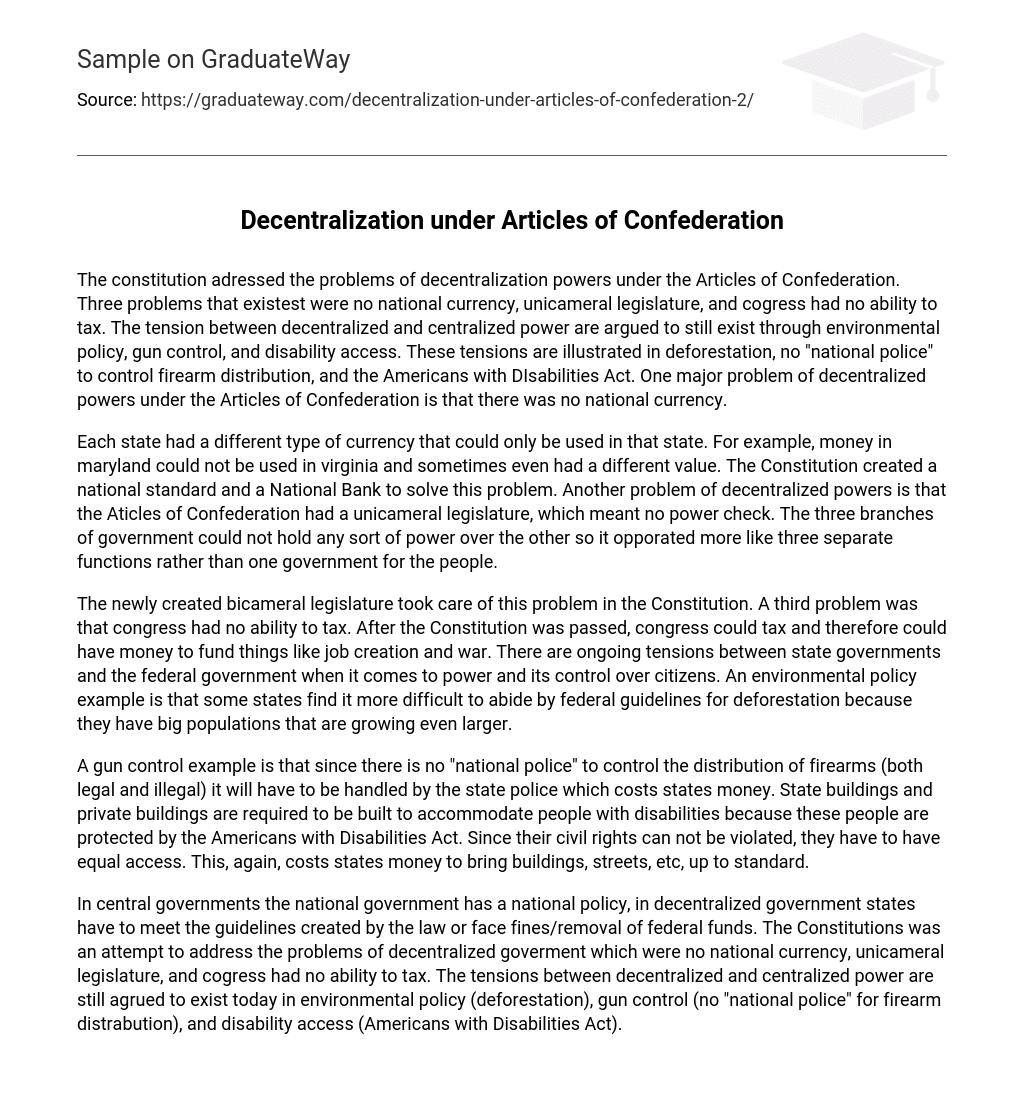The constitution tackled the issues of power decentralization highlighted in the Articles of Confederation. These problems included the absence of a national currency, a unicameral legislature, and an inability for Congress to impose taxes. The tension between centralized and decentralized power is still debated today in the context of environmental policy, gun control, and disability access. Examples of these tensions can be observed in deforestation, the absence of a “national police” to regulate firearm distribution, and the implementation of the Americans with Disabilities Act. A significant drawback of power decentralization under the Articles of Confederation was the lack of a national currency.
The issue of different types of currency in each state, which could only be used within that state and sometimes had varying values, was addressed by the Constitution. A national standard and a National Bank were established to resolve this problem. Additionally, the Articles of Confederation had a unicameral legislature, which meant there was no power check. Consequently, the three branches of government operated as separate functions rather than as a unified government for the people.
The Constitution resolved the problem of congress’s lack of ability to tax by creating a bicameral legislature. This allowed congress to tax, providing them with funds for job creation and war. However, tensions persist between state governments and the federal government regarding the distribution of power and control over citizens. In terms of environmental policy, some states struggle to comply with federal deforestation guidelines due to their rapidly growing populations.
Gun control is an issue that requires state police to handle the distribution of firearms, both legal and illegal, since there is no centralized national police force in place. Consequently, this implementation incurs costs for the states. Similarly, the Americans with Disabilities Act protects individuals with disabilities from having their civil rights violated. As a result, state and private buildings must be built to accommodate these individuals, incurring further expenses for the states to maintain equality in access. Additionally, the streets and infrastructure of states also need to be brought up to standard, resulting in additional financial burden.
In central governments, the national government sets a national policy. In decentralized governments, the states are required to comply with guidelines established by law or risk facing fines or the loss of federal funds. The Constitutions was created to tackle the issues faced by decentralized goverment such as the absence of a national currency, a unicameral legislature, and Congress’s inability to impose taxes. The tensions between centralized and decentralized power are still debated today in relation to environmental policy (specifically deforestation), gun control (the absence of a “national police” for firearm distribution), and disability access (Americans with Disabilities Act).





